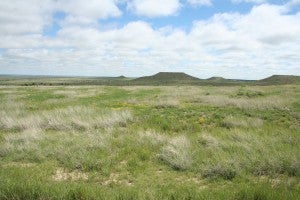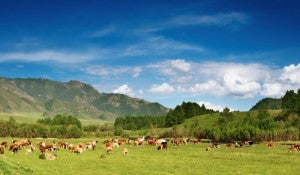
Heartland Ranch in Colorado. Credit: Nicole Rosmarino
One year ago this month the Climate Action Reserve, the premier carbon offset registry for the North American carbon market, approved the voluntary grasslands protocol: a landmark opportunity for ranchers to get paid for keeping their land as grazing lands, versus converting it to crops.
And now, the protocol is underway. Today, the Reserve officially listed the first two grassland conservation carbon projects– the first step in the process towards generating carbon credits for landowners.
The Southern Plains Land Trust, directed by Nicole Rosmarino, enrolled more than 15,000 acres in Southeastern Colorado in the first two projects. She plans to enroll 7,600 more acres in an additional project in 2017.
Even though ranchers lose the opportunity to convert land for crop production, the protocol provides landowners with a guaranteed revenue source in addition to what they earn ranching on the land. Nicole will work with a project developer to monitor and report on the status of the Southern Plains Land Trust’s grasslands. We expect they’ll start earning credits in early 2017 that can later be sold on the North American carbon market.
Here’s why you can get paid for protecting grasslands, too. Read More











 There’s a growing excitement around spreading compost on rangelands to help fight climate change. Over the past four years we have learned that grazed rangelands are really good at pulling carbon out of the air and sequestering it in the soil below. And if you add compost just one time, you can capture carbon dioxide from the atmosphere for more than seven years. Plus, you’ll increase both the quality of the grasses and the ability of the soils to hold water. If we scaled this to just 5 % of California’s rangelands, we could capture approximately 28 million metric tons of carbon dioxide per year, which is about the same as the annual emissions from all the homes in California.
There’s a growing excitement around spreading compost on rangelands to help fight climate change. Over the past four years we have learned that grazed rangelands are really good at pulling carbon out of the air and sequestering it in the soil below. And if you add compost just one time, you can capture carbon dioxide from the atmosphere for more than seven years. Plus, you’ll increase both the quality of the grasses and the ability of the soils to hold water. If we scaled this to just 5 % of California’s rangelands, we could capture approximately 28 million metric tons of carbon dioxide per year, which is about the same as the annual emissions from all the homes in California.